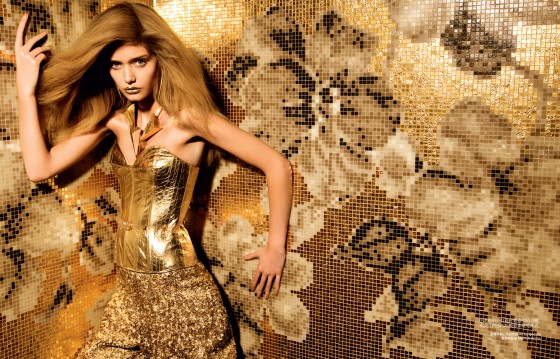How Indian Fashion has risen to an independent industry
It is fascinating to see how the Indian fashion industry invites new things. How the industry was apprehensive towards large people and now one of the biggest fashion critics is overweight? How a blogger who is as young as many people’s daughter has created a revolution and is invited to fashion weeks globally? How a designer was sought to showcase his collection which was acclaimed regardless of the fact that he was the first Indian to ever do so?..
Indian fashion has been seldom treading on. Even though it is a Mecca of talent, the prominence of the West has served as its setback. But now, I feel, it is a time for change.
 The fashion weeks in India gained momentum when The Fashion Design Council of India (FDCI) launched their first fashion week in the autumn of 2000. Even though the west has had runway since a century, the introduction of it in the Indian bioscope was during the beginning of the 20th century. Historically, the only exposure to fashion was on the celluloid and that too on actor’s body thus becoming a subtext.
The fashion weeks in India gained momentum when The Fashion Design Council of India (FDCI) launched their first fashion week in the autumn of 2000. Even though the west has had runway since a century, the introduction of it in the Indian bioscope was during the beginning of the 20th century. Historically, the only exposure to fashion was on the celluloid and that too on actor’s body thus becoming a subtext.
New Delhi, the capital, has now become home to spring and autumn fashion weeks biannually after the introduction of the ramp. Lakme- a leading beauty brand in India served as an initial sponsor but this changed after a big split five years ago and thereafter the illustrious brand launched their own yearly show in the city of Mumbai. With the celebration of Men’s Week, regional fashion events in other metropolitans like Kolkata and Bangalore, and Couture week, Indian fashion consciousness has grown to unforeseen bounds. Mixing Indian and Western elements in one line, our talent has made these fashion weeks stand out with their uniqueness and eclectic feel.
Autumn 2011 alone saw one of the biggest fashion events in the country with around 180 designers displaying their highly coveted collections with eminent Indian designers like Rajesh Pratap Singh, Manish Arora, Manish Malhotra, Prashant Verma and Gaurav Gupta.
The onset of fashion magazines and a separate column in the newspaper is relatively new since fashion has always been heavily influenced with Bollywood thus letting it not emerge out as an independent topic. International fashion magazines reflect this collective consciousness in Indian print editions with Harper’s BAZAAR releasing its branch in 2009 and others like VOGUE, Elle and Grazia.
The beginning of a new decade ushered in with it the power of VOGUE while it resounded for a century in America and Europe, this was particularly exciting and exhilarating. We always associate fashion with VOGUE and subject it to be the ‘bible’ of this industry so it was a crucial step to launch Vogue since it raised doubts of whether it could reach the barriers that the west editions had already created. The onset of fashion-related events, FNO India (Fashion’s Nighs Out) and countless other movements which Conde Nast brought has created a different status for the fashion elite. It has given a platform for emerging luxury brands, making Giambattista Valli and Haider Ackerman household names.
And the influence off bloggers you ask? The relatively new blogger revolution has touched here too with bloggers attending fashion weeks, collaborating with the print media, interning through their blogs and getting the taste of the industry before actually getting a degree.
The emergence of the middle class in India happened when it got independent in 1947. The middle class is what buys American; the middle class is where this all fits in. With the arrival of shopping malls and the introduction of designer labels in India and labels like Mango, French Connection and Zara, the fashion sense among the public has evidently risen on contrary to popular belief that the only people in the industry have a fashion sense. And how this sudden change? When did I actually discover this? A thousand reports, quotes and surveys did not make me believe that but a mere fact made me believe this when I travelled by the metro one day that India has risen.
Lakme Fashion Week Winter/Festive 2011 from Conde Nast (India)





